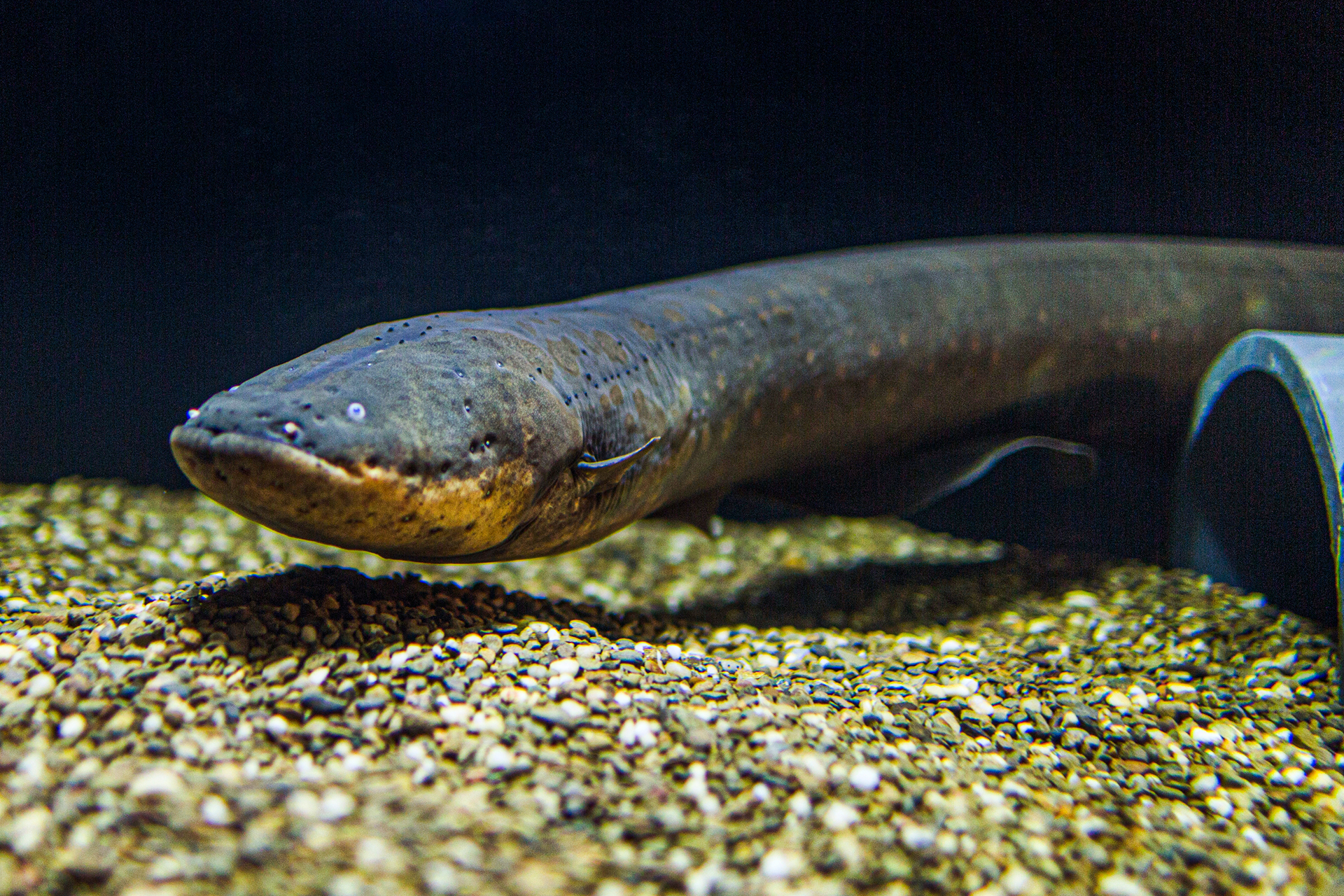Electric Eels: Shock You in More Than One Way
By Daria Zaitseva

In 1800, the Italian scientist Alessandro Volta drew inspiration from the electric eel to create the first ever battery [1, 2]. Despite their name, electric eels are not true eels but share a striking resemblance [2]. These fascinating fresh-water knifefish possess a unique ability to discharge electricity, which can stun or even kill some animals. But how does it work?
First, we should understand the concept of electric current, which is the flow of charged particles like electrons and ions. The difference in charges between two points generate a potential difference which results in a discharge when the circuit is complete, with the electric current inversely proportional to the resistance of the circuit.
In the nervous system of living organisms, signals are transmitted in the form of electrical impulses. Similar to how a battery has positive and negative terminals, our neurons actively maintain different ion concentrations across the cell membrane, resulting in a potential difference inside and outside the cell. By opening and closing the ion channels in the plasma membrane in an ordered fashion, ions are allowed to flow across the membrane down the concentration gradient. The flow of ions eventually generates a pulse of current that relays a message across a nerve.
Electric eels took it further. Up to 80% of their body consists of specialized organs involved in electricity generation [3]. The three organs, known as Sach's, Hunter's, and the main organ, are composed of modified flattened muscle cells called electrocytes. These tiny batteries are connected both in series and in parallel so the voltage and current add up respectively. When electrocytes receive a command to discharge, in the form of nerve signals, sodium channels in the plasma membrane will open, causing a flood of sodium ions (Na+) into the cells. This results in the accumulation of positive charges within the stacks of electrocytes, turning the entire body of the electric eel into one long battery, with a positive end at the fish’s head and a negative end at the tail. The voltage of this living battery can reach up to 600 V [1], which is almost three times of Hong Kong’s standard electrical voltage!
To compensate for their weak eyesight, electric eels also set up low-voltage electric field to gauge their surroundings [4]. This feature enables them to live and hunt in the murky, slow-moving pools and swamps of the Amazon and Orinoco rivers of northern South America [2]. When an obstacle, prey, or a predator comes close, the fish’s electric field is disrupted. Even a tiny distortion, possibly as small as a microvolt per centimeter (10-6 V/cm) [4], can be detected by the electroreceptors distributed throughout the fish's body, alarming the knifefish.
Once the fish detects an object that resembles prey, it will enter a typical attack mode [5, 6]. It will first generate a doublet of high-voltage electric discharges which can cause a powerful involuntary twitch in the hidden prey. The ripples generated can be sensed by the knifefish and reveal the location of the prey. Then the fish will fire a volley of high-voltage pulses to paralyze the prey and then swallow it. To give an even harder shock, the electric eel sometimes seizes their prey in its mouth and curls its body to bring the prey closer to the tail, so that the prey can experience a much stronger electric field [5].
This fascinating ability comes with a mystery: How does a knifefish avoid shocking itself? A theory states that the relatively large size of electric eels (they can reach 2.5 meters in length!) helps them withstand the current that is unbearable to their much smaller prey [7, 8]. Meanwhile, the insulating fat layers surrounding the electric organs [8] and the dissipation of current into water [7] protect the fish’s central nervous system and heart from being directly shocked by the strong current they just produce. Yet, there is indeed much more to be studied and discovered.
References
[1] SPARK Museum of Electrical Invention. (n.d.). Volta’s Fishy Invention. https://www.sparkmuseum.org/voltas-fishy-invention/
[2] Chetan-Welsh, H. (n.d.) How do electric eels work? Natural History Museum. https://www.nhm.ac.uk/discover/how-do-electric-eels-work.html
[3] The University of Western Australia. (2015, February). Electrical circuits 6: Electric eels (fact sheet). https://www.uwa.edu.au/study/-/media/faculties/science/docs/electric-eels.pdf
[4] Bennett, M. V. L. (1971). Electroreception. In W. S. Hoar, & D. J. Randall (Eds.), Fish Physiology (pp. 493–574). Academic Press. https://doi.org/10.1016/S1546-5098(08)60038-2
[5] Catania, K. C. (2019, April 1). Shocking Secrets of the Electric Eel. Scientific American. https://www.scientificamerican.com/article/shocking-secrets-of-the-electric-eel/
[6] Catania, K. (2014). The shocking predatory strike of the electric eel. Science, 346(6214), 1231–1234. https://doi.org/10.1126/science.1260807
[7] Scientific American. (2005, December 5). How do electric eels generate a voltage and why do they not get shocked in the process? https://www.scientificamerican.com/article/how-do-electric-eels-gene/
[8] BBC Wildlife Magazine. (2023, July 3). How an electric eel works: You wouldn't want to be on the receiving end of its high voltage charge. https://www.discoverwildlife.com/animal-facts/fish/how-an-electric-eel-works